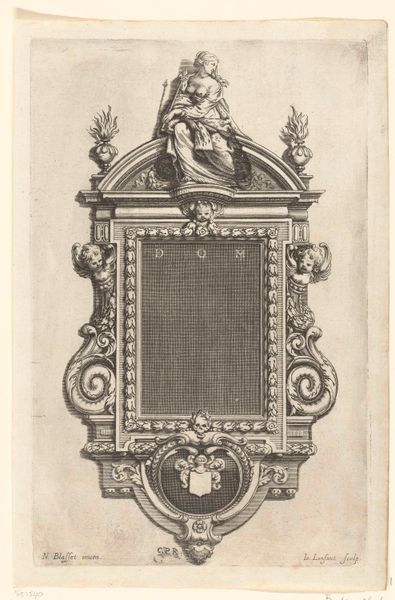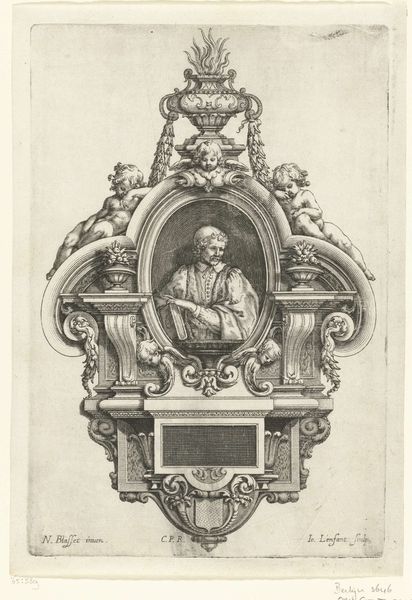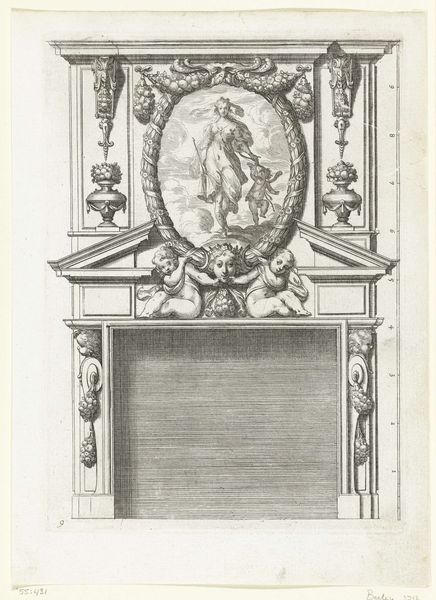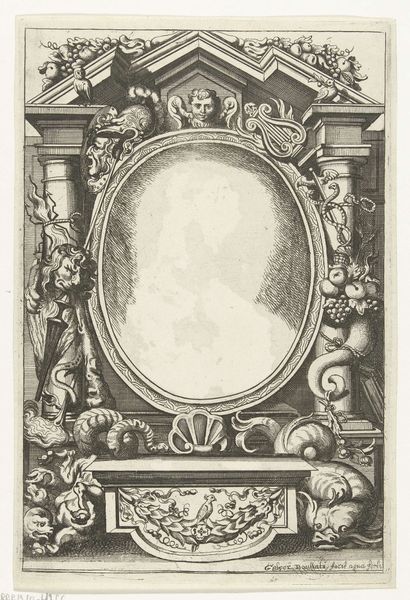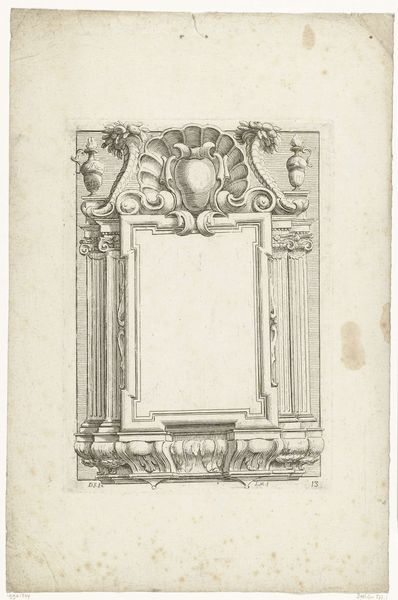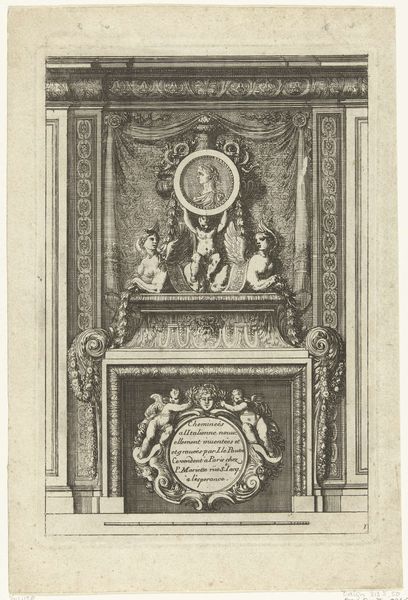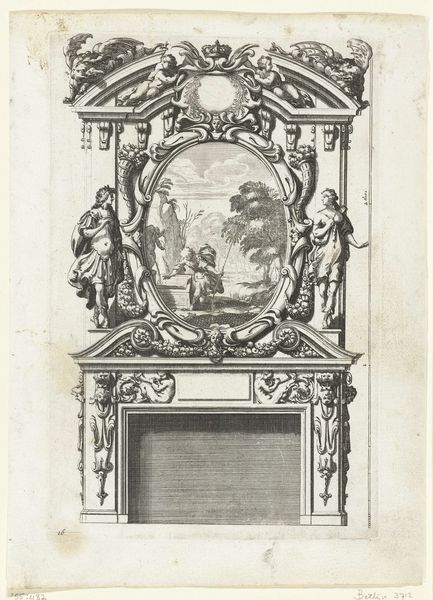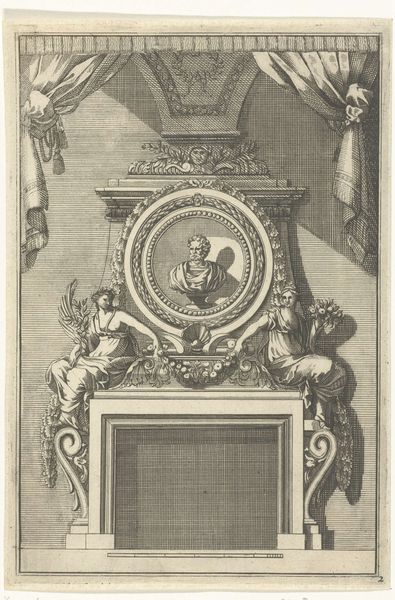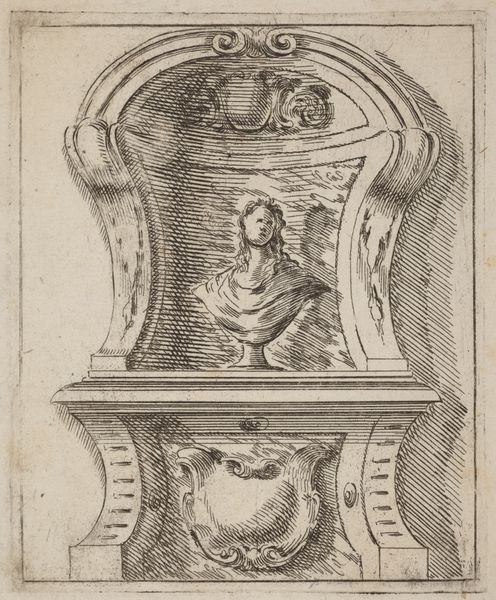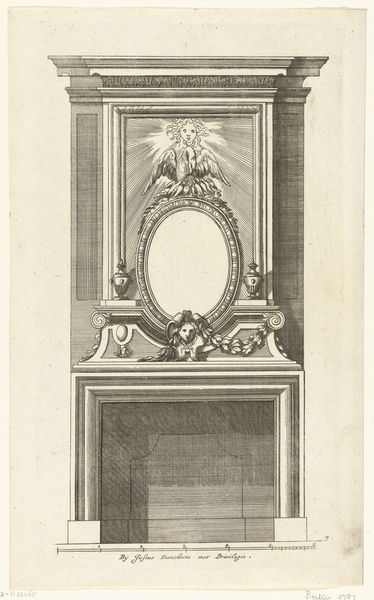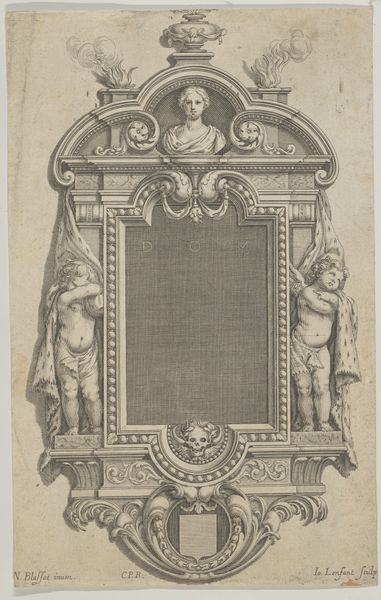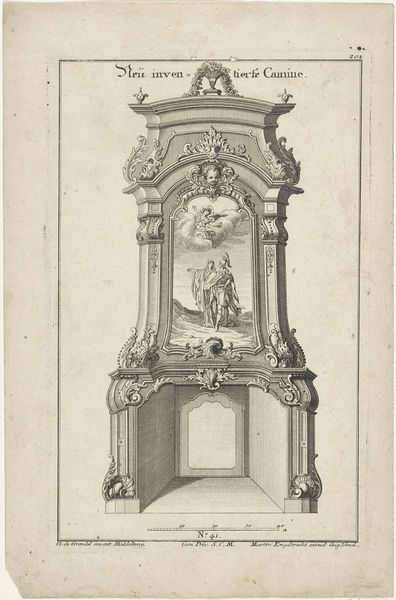
engraving
#
portrait
#
baroque
#
old engraving style
#
form
#
personal sketchbook
#
line
#
history-painting
#
engraving
Dimensions: height 215 mm, width 142 mm
Copyright: Rijks Museum: Open Domain
Curator: Welcome! Before us is “Epitaaf,” an engraving by Jean Lenfant, dating from before 1641. Editor: Well, it's certainly dramatic. A lot of stark contrasts, this intense feeling of mortality but softened by that cherubic bust at the top. What’s your first take on this? Curator: I immediately zoom in on the process—the intricate linework of the engraving, each cut meticulously placed to build up value and texture. The material itself, paper, is crucial. Prints made art affordable. How does its relative accessibility affect the symbolism? Editor: Good point! Speaking of symbols, I see the duality very strongly: life and death are intertwined, almost mocking each other with that skull crowned with laurel above the serene bust. Angels juxtaposed with skeletal figures. There is even a vacant inscription area at its center which asks you to remember who is absent, who might need a tribute. The Baroque style, it emphasizes that very juxtaposition. Curator: The style definitely conveys wealth and access. This piece is speaking about cultural constructs and perhaps personal commemoration, even celebrating skilled craftsmanship, while other printed images were mass produced and purely functional. The engraving suggests permanence, but is actually quite fragile on paper. Editor: Interesting perspective. And what of the labor invested here? Every curl and flourish, every tiny skeletal detail laboriously carved, the creation of these details seems like devotional work, or at least an investment. I think about the historical value of memory, how portraits have become records, like a photograph that recalls something lost. The work here speaks beyond craft. Curator: It is, ultimately, an image that’s trying to communicate. But how we receive that message now versus in its time is also altered. Is this image truly functional in our setting, or does it become an object that prompts reflection on past techniques? I think that we must look to process, and cultural context for art, especially functional art like this one. Editor: I appreciate the emphasis you've put on its construction. Looking again, that meticulous method really strengthens the themes. Thinking about all these artistic choices brings forward interesting concepts around art, memory, craft and the human condition. Curator: Absolutely. And these conversations across perspectives only deepen our insight!
Comments
No comments
Be the first to comment and join the conversation on the ultimate creative platform.
